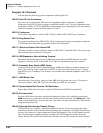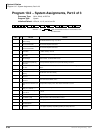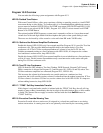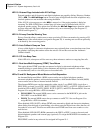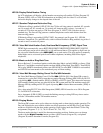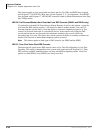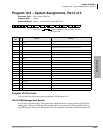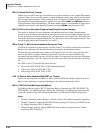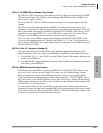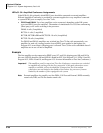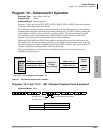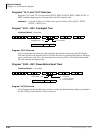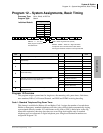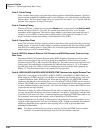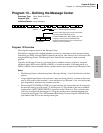
System & Station
Program 10-3 – System Assignments, Part 3 of 3
3-36 Strata DK Programming 5/99
LED 19: Speed Dial Entry Timeout
Station users can either have up to one minute or up to three minutes to store a Speed Dial number
or memo. If they do not store the number or memo within the set time, their station exits the Speed
Dial-storage mode and returns to the normal idle state. The timer is required because of the User
Programmable Feature Buttons feature, which allows the [PDN],
+ROG, and &QI7UQV buttons to
be programmed in Speed Dial Memory. The three-minute setting is recommended if station users
frequently store memos with Speed Dial numbers using the
0RGH button below the LCD.
LED 18: Built-in Auto Attendant Camp-on Busy/Ring No Answer Routing
This option is designed for Auto Attendant configurations that have primary announcement
devices, but no secondary ones tells the system where to route Auto Attendant calls that ring and
are not answered or have been camped-on for a designated time (see Program 26). The calls can be
sent back to the primary announcement device or to the station or stations assigned to the CO lines’
normal ringing pattern (see Programs 81, 84, and 87).
LEDs 16 and 17: Built-in Auto Attendant Disconnect Time
If LED 18 is assigned for normal ringing, set LEDs 16 and 17 to tell the system when to disconnect
Built-in Auto Attendant calls that have not been answered by the alternative stations.
The time the Auto Attendant rings stations (per Program 81, 84, 87) after a loop start line caller
does not dial and/or a ringing station does not answer. If a call is not answered before ring
disconnect time period time-out, the call will disconnect. This prevents loop start lines from being
locked-up when there is no CPC supervision from the central office after the outside caller hangs
up.
Set LEDs 16 and 17 for the desired time as follows:
♦ 40 seconds: LED 16 OFF, LED 17 OFF (Initialized default)
♦ 120 seconds: LED 16 OFF, LED 17 ON
♦ 240 seconds: LED 16 ON, LED 17 OFF
LED 15: Built-in Auto Attendant MOH/RBT for Transfer
Callers can hear ring back tone (RBT) or Music-on-hold (MOH) after being transferred from the
Built-in Auto Attendant to a station, depending on the selection made with LED 15.
LED 14: RS-232 Voice Mail Signaling Method
The DK provides two types of RS-232 signaling: Bellcore Standard type (TR-TSY-000283, TR-
NWT-000283) or Toshiba Proprietary. Refer to the VM machine installation documentation and
contact the Toshiba and/or VM machine manufacturer for VM machine SMDI configuration.
Notes
● Toshiba VP products require Release 7 software or above for Toshiba proprietary integration.
● Toshiba VP products require the SW-X0042 feature package (CO Centrex) for SMDI, but not
for Toshiba Proprietary RS-232 Interface.
● Toshiba Stratagy products support SMDI only in the standard configuration, not Toshiba
proprietary RS-232 interface.



